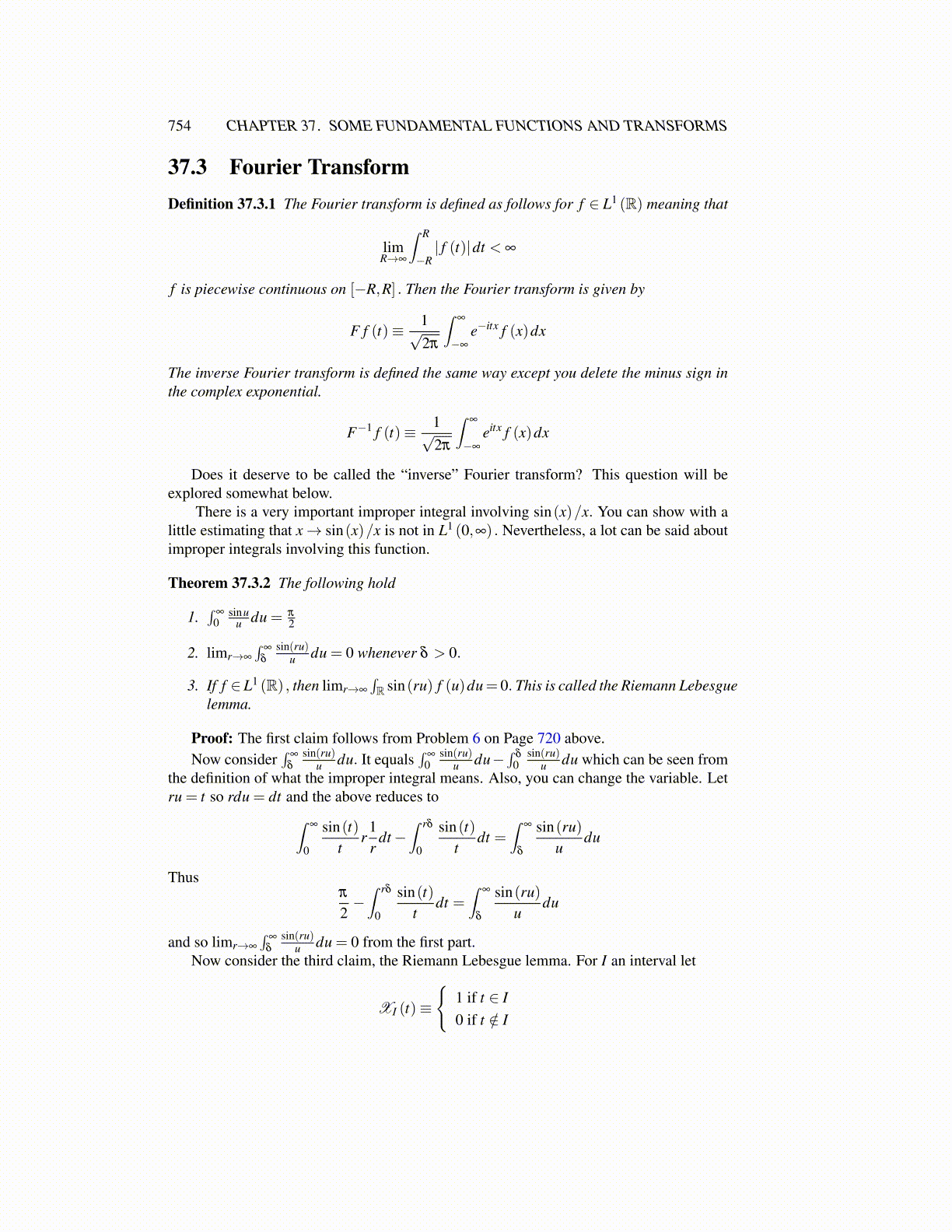
754 CHAPTER 37. SOME FUNDAMENTAL FUNCTIONS AND TRANSFORMS
37.3 Fourier TransformDefinition 37.3.1 The Fourier transform is defined as follows for f ∈ L1 (R) meaning that
limR→∞
∫ R
−R| f (t)|dt < ∞
f is piecewise continuous on [−R,R] . Then the Fourier transform is given by
F f (t)≡ 1√2π
∫∞
−∞
e−itx f (x)dx
The inverse Fourier transform is defined the same way except you delete the minus sign inthe complex exponential.
F−1 f (t)≡ 1√2π
∫∞
−∞
eitx f (x)dx
Does it deserve to be called the “inverse” Fourier transform? This question will beexplored somewhat below.
There is a very important improper integral involving sin(x)/x. You can show with alittle estimating that x→ sin(x)/x is not in L1 (0,∞) . Nevertheless, a lot can be said aboutimproper integrals involving this function.
Theorem 37.3.2 The following hold
1.∫
∞
0sinu
u du = π
2
2. limr→∞
∫∞
δ
sin(ru)u du = 0 whenever δ > 0.
3. If f ∈L1 (R) , then limr→∞
∫R sin(ru) f (u)du= 0. This is called the Riemann Lebesgue
lemma.
Proof: The first claim follows from Problem 6 on Page 720 above.Now consider
∫∞
δ
sin(ru)u du. It equals
∫∞
0sin(ru)
u du−∫
δ
0sin(ru)
u du which can be seen fromthe definition of what the improper integral means. Also, you can change the variable. Letru = t so rdu = dt and the above reduces to∫
∞
0
sin(t)t
r1r
dt−∫ rδ
0
sin(t)t
dt =∫
∞
δ
sin(ru)u
du
Thusπ
2−∫ rδ
0
sin(t)t
dt =∫
∞
δ
sin(ru)u
du
and so limr→∞
∫∞
δ
sin(ru)u du = 0 from the first part.
Now consider the third claim, the Riemann Lebesgue lemma. For I an interval let
XI (t)≡
{1 if t ∈ I0 if t /∈ I